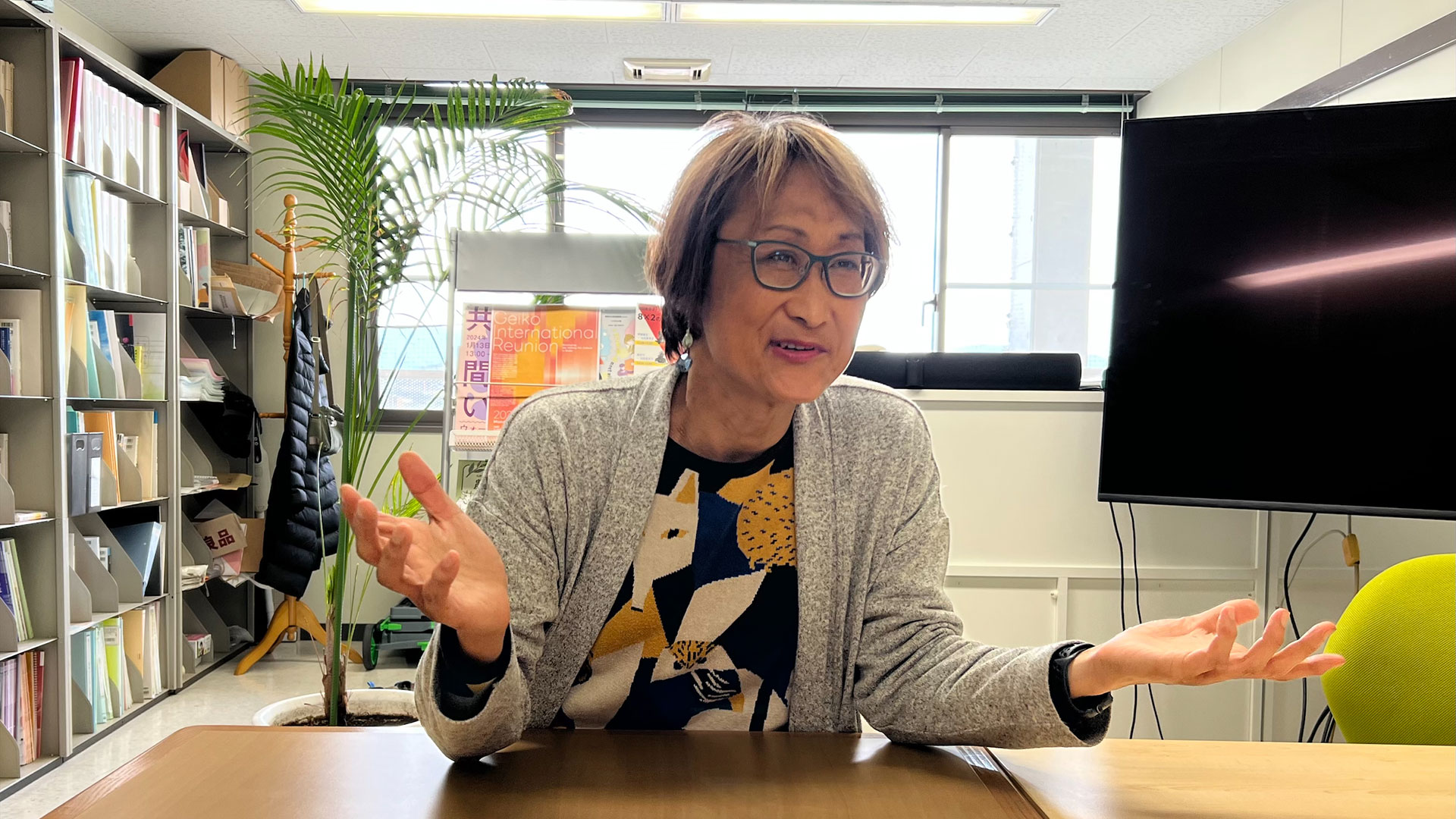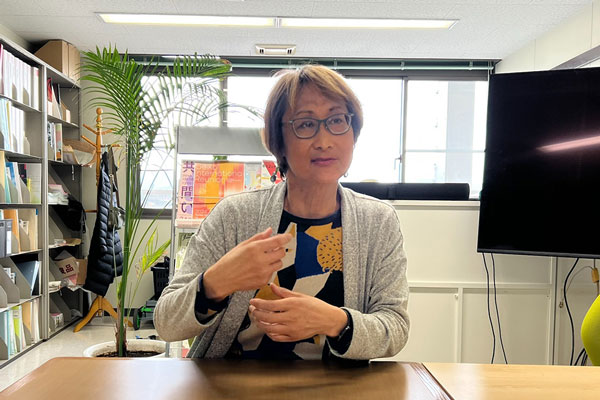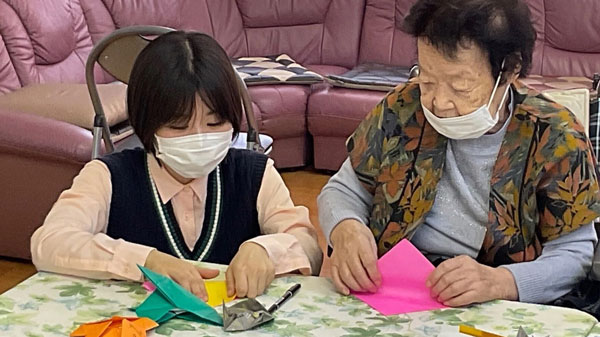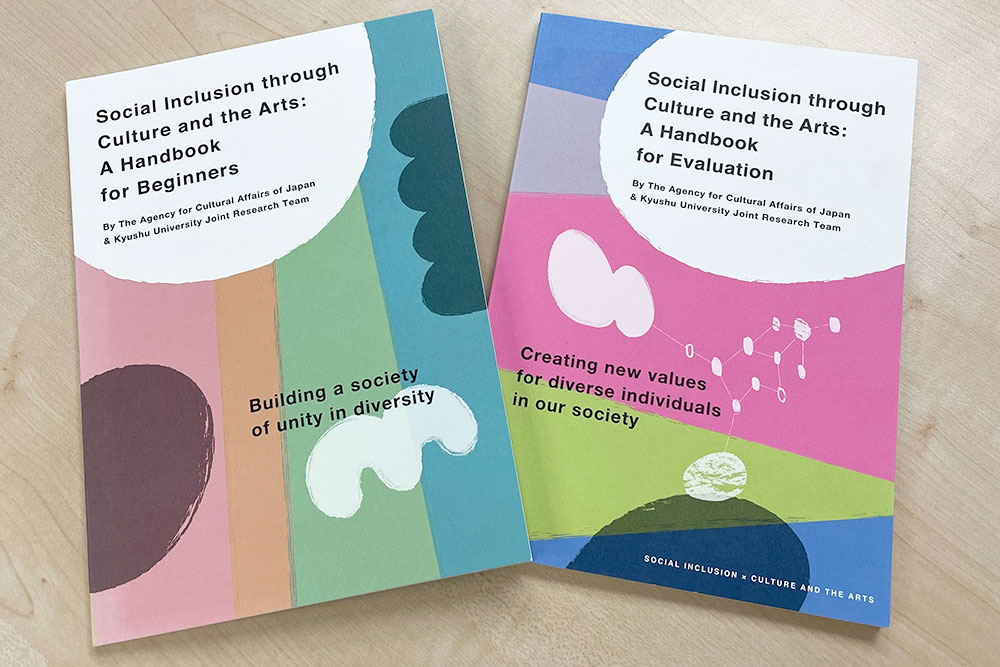
The power of the arts for social inclusion and diversity: Changing society through creative expression
Professor Mia Nakamura is an expert in Cultural Policy and Arts Management, with a dedication for exploring how the arts can help people. She has actively participated in art activities with sexual and gender minority communities in Tokyo, focused on recovery after the Great East Japan Earthquake, and organized workshops for people with dementia. Through art activities, she attempts to articulate the transformative power of the arts in healing and promoting social inclusion.
What is your research expertise, and what inspired your research interests?
My journey began during my graduate studies in the United States, where I found conventional arts research unfulfilling. I was also dealing with complicated feelings and trying to explore my sexual and gender identity and status as a foreigner. Since I was experiencing discrimination, I wanted to help people who were dealing with similar challenges, so I joined several social activism movements.
When engaging in activism, I felt that verbal communication limited how we understood each other. While words can convey important messages, they may not capture the nuanced complexities of human experience. This is where art and non-verbal communication play a crucial role. Through the arts, we can empathize with each other in ways that are not possible through words. I decided to explore the interdisciplinary approach of using the arts to address issues of empowerment, inclusivity, and diversity.
What are your ongoing projects?

In our current studies, we are tackling the complexity of evaluating art activities. While it is commonly believed that the arts cannot be evaluated, we cannot ignore the need for assessment. But assessing the outcomes of art activities is difficult. While we do not give up on this possibility, our emphasis is on evaluating the process and management of these activities. By doing so, we aim to enhance communication and promote innovation. Our goal is to articulate value through evaluation. Art is inherently creative in nature and often lacks a specific purpose, so attempting to evaluate art activities is challenging. While we may have overarching goals, such as promoting well-being and social changes through their work, in practice we must allow room for freedom and creativity in artistic expression. In addition to art evaluation research, we organize art activities that target underrepresented groups. Specifically in our ongoing project, we hold art workshops for people with dementia and their carers.

What methods do you use in your research approach?
We use sociological research methods, collaborating with professionals including artists, welfare professionals, and medical doctors. Our research involves conducting surveys and fieldwork and recording videos. We are particularly interested in understanding how and why non-verbal communication through the arts is effective. The art may look magical and ambiguous. However, we try to understand the process of how the arts have impact.
I sometimes meet artists who are doing valuable activities that are not getting recognized. As a researcher, I reach out to these artists, evaluate their work, and try to promote them in broader contexts. Moving forward, I aim to continue refining our approaches in evaluating the arts and try to find ways that we can verbalize the value of abstract, non-verbal art.
Could you elaborate on the “role of non-verbal communication and its impacts”?
We are interested in co-creation activities that foster collaboration between artists and non-artists. Our expectation is to unearth latent talents that the person is unaware of.

For instance, we recently held workshops for people with dementia and their carers; these individuals often struggle to express themselves with words but can explore their memories and desires through the arts. By using various art forms, including drama and music, we provide mediums for creative expression and better human connections.
Creativity is often overlooked in our everyday lives. When we help people to express themselves creatively through the arts, this reminds people that autonomy and independence are crucial in their personal lives. The arts also provide people with new opportunities to deepen their interpersonal connections. Many of life's challenges stem from difficulties in relationships. When we practice art to create shared memories, we appreciate other individuals’ existence and the value of our own lives.

Since you have experiences working and studying abroad, what are your observations on cross-cultural differences?
Comparing my work experience abroad with Japan, I have noticed differences in communication styles. In Western countries like the US and the UK, communication tends to be more debate-like and logical. However, in Japan, communication is often more emotional and empathetic.
For instance, during my studies following the Great East Japan earthquake, I investigated art activities in the aftermath of the natural disaster. The approaches between Japan and Australia were starkly different. In Australia, the focus was on direct problem-solving and practical measures like fundraising. On the other hand, in addition to fundraising efforts, Japan's approach was imbued with empathy and embraced spiritual practices, such as seen in the tradition of Japanese people donating origami for prayers. From a researcher's point of view, we noticed that Japan paid more attention to community resilience, emphasizing the emotional resonance in interactions.
How do you think artificial intelligence (AI) impacts arts?
AI focuses on external goals such as financial gain, efficiency, and social status. However, we must recognize the intrinsic value of the artistic process. Unlike AI, where outcomes are more important than anything, art emphasizes the journey and internal motivation.
The utilitarian approach to the arts involves creating art for practical purposes, and it is different from artworks for the sake of art activities. When the arts become purely utilitarian, it loses its essence, and the happiness derived from it disappears. Beyond the utilitarian mindset that society often imposes on us, we need to explore more creative ways to pursue happiness. Engaging in artistic activities helps our well-being and brings us a sense of fulfilment and joy.
We must ensure that the arts enhance our well-being and foster a democratic society where every individual can thrive. Human beings should be afforded more freedom and less regulation. Art holds the power to positively influence individuals and society. However, when used for propaganda or commercial gain, art can be manipulative. For instance, TV commercials or companies using art to nudge public opinion. Art has both benefits and risks and as our guiding principle, we should prioritize attempts that increase well-being and lead to a brighter future.
You were the Deputy Director of the Social Art Lab (SAL); can you tell us about this project?
In 2015, the Faculty of Design established a research organization dedicated to exploring how the arts can promote new connections among people, called the Social Art Lab (SAL). SAL boasts students and active researchers from Japan and abroad, offering students the opportunity to acquire practical art skills and explore their potential for driving social change. This initiative strongly resonates with Kyushu University's VISION 2030, which aims to create a more inclusive and sustainable society with integrative knowledge.

In 2018, the government called for research proposals to develop a framework for assessing art activities for social inclusion. We established a team of researchers at SAL and collaborated closely with government officials over the next three years. The outcome of our collaboration resulted in the creation of three handbooks. These handbooks are available in English and Japanese and provide practical guidance and evaluation frameworks for art activities. Since 2015, SAL has spearheaded several social art activities, such as recovery support after the Northern Kyushu Flood, Theatre art and online performances during the COVID-19 pandemic, support for depopulating regions, and public seminars. (SAL became part of the Design Initiative for Diversity and Inclusion in 2020.)

What advice do you have for students who want to follow your path?
Don't follow me! Instead of trying to follow or emulate me or other senior researchers, recognize that times are constantly changing. Follow your passion and embrace your curiosity. As students, you often have interesting ideas, and professors are here to help guide you by suggesting the best approaches. The arts are a powerful tool, but narrow-minded individuals who are overly fixed on specific art formats may find it challenging to pursue research into the arts. Embrace openness and flexibility, and let your passion guide your academic journey.
For more information about Prof. Nakamura and her works:
Lab website: https://mianakamura.themedia.jp/
Handbooks for social activity: https://www.sal.design.kyushu-u.ac.jp/publication/english/































